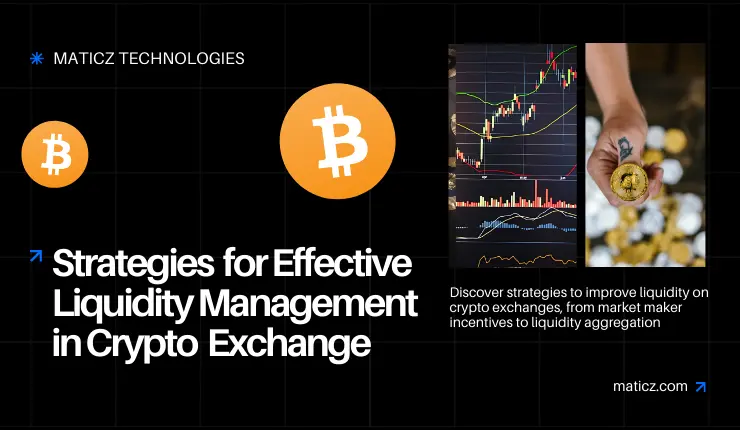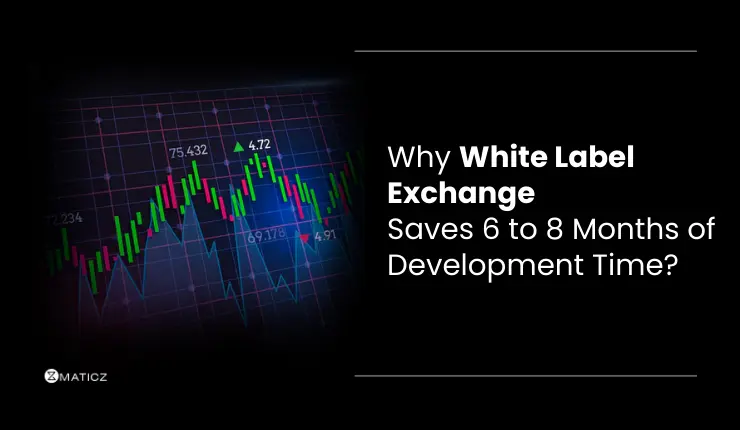Share Posts

Liquidity Management in Crypto Exchanges: How to Ensure Smooth Trading
50
2097
103
In the case of cryptocurrency exchanges, Liquidity occupies an essential position in their success rate. According to crypto exchanges, liquidity is how fast the assets can be purchased or sold without affecting the price. Higher liquidity ensures effortless transactions reduced market volatility, and tighter spread. Let’s delve deep into this blog to learn how liquidity management in crypto exchanges ensures smooth trading.
Why Liquidity Management is Mandatory?
In the volatile and quickly evolving cryptocurrency market, Liquidity management is even more critical. It directly impacts the trading experience of users, the reputation of the exchange, and ultimately its success. It makes it a bit harder to manipulate prices and helps analyze traders' behavior. Liquidity also offers stable prices in the thriving market and it is less volatile resulting in the attraction of more investors. Additionally, liquidity allows for more advanced trading strategies like arbitrage and market making, which contribute to market depth.
Core Strategies For Effective Liquid Management
Market Making
In crypto exchanges, market-making has become the fundamental part as it also ensures liquidity, minimizes slippage and provides smooth trading experiences to users. Let’s have a look at some of the key components in market-making.
Automated Market Making
In the crypto space, market makers utilize automated algorithms and trading bots to manage their orders. These bots can respond to market conditions much faster than human traders, placing orders at optimal price levels and adjusting the bid-ask spread based on market volatility, depth, and other factors.
High-Frequency Trading
Some market makers practice high-frequency trading to take advantage of small price differences between different exchanges, trading pairs, or assets. They use advanced algorithms to place large numbers of trades per second, aiming for very small profits per trade but making a good profit over volume.
Order Book Management
Order book management is another crucial aspect in market-making it ensures efficient price discovery. Market makers place buy and sell orders at various price standards and that results in creating depth in the book. Based on market conditions, such as volatility and volume, they adjust bid-ask spreads dynamically to remain competitive.
Constant monitoring of market data, quick order refreshment, risk mitigation strategies, and inventory balancing are the most considerable requirements of effective order book management. By maintaining a deep and well-organized order book, market makers can ensure effortless trading, better execution speed, and overall enhanced user experience, while profiting from spread-based trading strategies.
Liquidity Providers
Liquidity providers are the backbone of cryptocurrency exchanges' liquidity management. They are the ones who keep the crypto markets strong and well-functioning which are capable of smooth and efficient trading activities. These liquidity providers may be entities or individuals who supply digital assets to exchange markets, enabling smoother and faster trades by ensuring there are always buy and sell orders available. They help to reduce slippage and provide stability to market prices.
Crypto exchanges often incentivize liquidity providers with fees, rewards, or token incentives in return for their capital. This can be particularly mandatory in decentralized exchanges (DEXs), where liquidity is typically provided by users through smart contracts. Effective liquidity management facilitates balancing supply and demand for assets while minimizing the risks of extreme price volatility. Liquidity providers contribute by ensuring sufficient liquidity across various pairs, helping both retail and institutional traders execute transactions efficiently.
Incentives on Trading Activities
Incentives are crucial for enhancing trading activities on cryptocurrency exchanges. By providing benefits like lower fees, staking options, or token-based rewards, exchanges can draw in high-volume traders and market makers Incentives enhance liquidity, improve price stability, and reduce slippage. Offering targeted incentives can encourage more active participation, creating a lively trading environment that benefits both the platform and its users. By designing effective incentive programs, exchanges can ensure ongoing liquidity and market growth.
Risk Management and Regulatory Compliance
Cryptocurrency exchanges become strong and reliable platforms by managing risks and adhering to regulatory obligations. Risk management includes overseeing the liquidity available in the pools, handling the market peaks and run-offs, and initiating safeguards against sudden price changes. This involves real-time monitoring, stress testing, and having enough capital to cover potential losses.
Compliance with rules imposed by the regulators, which is the core of regulation, consists of dealing with the provisions that are imposed by the laws like Anti-Money Laundering (AML) and Know Your Customer (KYC) procedures to avoid crimes and any illegal activities from taking place. These activities through which the trust of customers is met, the assets are protected and the exchanges are run within the legal framework are the means of safeguarding both the users and the investors.
Liquidity Aggregation Over Cross-Exchange
The aggregation of liquidity for multiple crypto exchanges, which is a method to unify the order books of different platforms, serves as the main tool for increasing the overall market liquidity. In this way, traders can access a large number of buy and sell orders, which as a result, reduces slippage and at the same time leads to effective trade execution.
Merging the liquidity from several exchanges allows the platforms to present the user with lower price differences and very close exchange rates. This is the way to the best price finding and tighter spreads. Liquidity aggregation allows the asset flow to be managed, thus the risks associated with low liquidity are reduced and operations become smoother. Meanwhile, users can enjoy a higher market depth and a smaller effect on price movement with large trades.
Conclusion
Proper liquidity management in crypto exchanges improves the trading situation by adding more stability, efficiency, and appeal to both the exchange and its customers. Adopting comprehensive approaches that combine the building of strategic partnerships, technological innovation, and risk management practices, can guarantee a seamless and dependable trading experience for all the participants.
If you’re an entrepreneur seeking to enhance liquidity on an existing crypto exchange or interested in launching a new high-liquidity exchange, Maticz is here to assist you. As a leading cryptocurrency exchange development company, we offer end-to-end services tailored to your needs. Connect with our experts for a free technical consultation.
Tap Into the Future
The latest insights, posts, and project updates - straight to your inbox.




